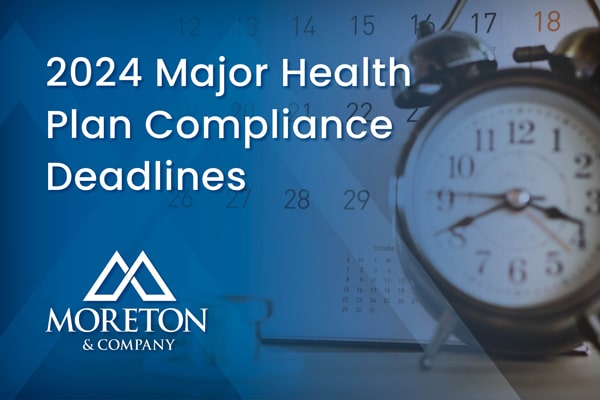
Breaking the Barriers
of Mental Health
People often avoid or delay seeking treatment for their mental illness for fear of being treated differently or even losing their jobs and livelihood. That’s because stigma, prejudice, and discrimination have led to the marginalization of those with mental illness. Understanding what that looks like–and how to address it–is the first step towards eradicating barriers to acceptance and support for those who need it most.
The Facts on Stigma, Prejudice, and Discrimination
The stigma around mental health often comes from fear or a lack of understanding. Inaccurate or misleading media representations of mental illness contribute to both of those factors. A review of studies on stigma shows that while the public may accept the medical or genetic nature of a mental health disorder and the need for treatment, many people still have a negative view of those with mental illness.
Researchers identify different types of stigma:
- Public stigma involves the negative or discriminatory attitudes that others have towards mental illness.
- Self-stigma refers to the negative attitudes–including internalized shame–that people with mental illness have about their own condition.
- Institutional stigma is more systemic, involving policies of government and private organizations that (intentionally or unintentionally) limit opportunities for people with mental illness.
Stigma in the Workplace
A 2019 national poll from the American Psychiatric Association (APA) found that mental health stigma is a major challenge in the workplace. About half of workers were concerned about discussing mental health issues at their jobs. More than one in three were concerned about retaliation or being fired if they sought mental health care.
About 1 in 5 workers were completely comfortable talking about mental health issues. The poll found a generational divide: millennials were almost twice as likely as baby boomers (62% vs. 32%) to be comfortable discussing their mental health. Half of the workers polled were at least somewhat comfortable talking about mental health and most said they would help guide a troubled co-worker to mental health resources. However, even among those willing to help, about one in four said they would not know where to turn for mental health help.
Addressing Stigma
Research shows that knowing or having contact with someone with mental illness is one of the best ways to reduce stigma. Individuals speaking out and sharing their stories can have a positive impact on those who have less exposure to mental illness. When we know someone with a mental illness, it becomes real and relatable rather than scary and threatening.
Employee Assistance Programs (EAP), commonly available through employers, help employees deal with a variety of concerns such as work-life stressors, issues affecting mental and emotional well-being, family issues, financial concerns, relationship problems, or legal concerns. However, the services often go unused–only about 3-5% of employees use available EAP services, according to the Center for Workplace Mental Health.
American Psychiatric Association. (2020). Stigma, prejudice and discrimination against people with mental illness. Psychiatry.org – Stigma, Prejudice and Discrimination Against People with Mental Illness. Retrieved February 21, 2023, from https://www.psychiatry.org/patients-families/stigma-and-discrimination
Mental Health Matters
Your mental health, including your mental and emotional well-being, can change over time due to several different factors like workload, stress, and work-life balance. May is Mental Health Awareness Month which is a time to offer support to those with mental illness and fight the stigma surrounding mental health.
Mental illnesses are some of the most common health conditions in the United States; more than 50% of the population will be diagnosed with a mental illness at some point. As many as 1 in 5 people will experience mental illness in a given year, and as many as 1 in 25 live with a serious mental illness such as bipolar disorder or schizophrenia. It is vital to provide support to those who are struggling with mental health, and it is just as important to take care of your mental health.
The past few years have been challenging for mental health, but it has enabled more transparency and empathy for those who may be struggling. Here are a few strategies to help you thrive:
- Create healthy routines. Healthy routines include eating a nutrient-rich diet, exercising, and getting enough sleep. Start with small changes and work your way up to more impactful ones.
- Own your feelings. It can be easy to get caught up in emotions as you’re feeling them. Take time to identify your feelings and learn how to better cope during challenging situations.
- Connect with others. Connections with friends, family, or communities help enrich your life and enable you to power through tough times.
- Cultivate gratitude. Practicing gratitude is linked to improved mental health. Consider keeping a gratitude journal, meditating, or making a point to thank others in your life.
– Mental Health Moment –
Supporting Your Mental Health
Mental Health disorders (including depression, anxiety, stress, and other psychological disorders) affect nearly a quarter of all adults, according to the U.S. Centers for Disease Control and Prevention. Employees afflicted with poor mental health and high levels of stress often experience reduced focus, low productivity, reduced cognitive abilities, and poor physical health. Utilizing community and other educational resources can be a great starting place for supporting your mental health.
- 988 Suicide & Crisis Lifeline: 988 has been designated as the new three-digit dialing code that will route callers to the National Suicide Prevention Lifeline. Call, text, or chat 988 to be connected with trained counselors that are part of the existing Lifeline network. www.988lifeline.org
- American Foundation for Suicide Prevention (AFSP): Provides mental health trainings, like SafeTalk, and a variety of community resources for everyone. www.afsp.org
- National Alliance on Mental Illness (NAMI): Provides a variety of free community resources as well as a support group for those experiencing a mental health crisis, including those supporting a loved one in their mental health struggle. www.nami.org/home
- MentalHealth.gov: This is an online resource that provides free education on mental health. Some of the topics they include are what to look for, how to talk about mental health, and how to get help. www.mentalhealth.gov/
Additional Strategies
- Take advantage of your workplace Employee Assistance Program (EAP).
- Make time to unwind. Participate in some activities that you enjoy, catch up on a project, or start a new hobby.
- Limit screen time by disconnecting from your phone, tv, or computer screen a couple of times each day.
- Connect with a counselor. Free and confidential resources are available to help you or a loved one find the help you need.


